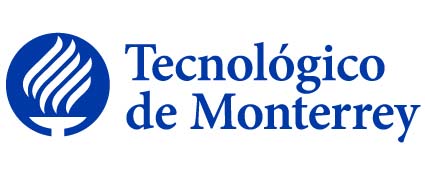
|
|||||
Disciplina asociada:Ciencias Clínicas |
|||||
Escuela:
Medicina y Ciencias de la Salud
|
|||||
Departamento Académico:
Ciencias Clínicas
|
|||||
Programas académicos: |
|||||
Requisitos:Estar cursando al menos el periodo 13 |
|||||
Equivalencia:No tiene. |
|||||
Intención del curso en el contexto general del plan de estudios: |
|||||
|
La materia de dermatología es un curso avanzado donde el alumno demostrará ser un médico ético y profesional en la aplicación de sus conocimientos, habilidades y destrezas al realizar un examen físico dermatológico completo y describir las lesiones de la piel utilizando un lenguaje dermatológico preciso. Asimismo, comunicará con asertividad las enfermedades más comunes de la piel encontradas en la práctica diaria. Como producto de aprendizaje desarrollará un plan lógico de tratamiento, con el objetivo de disminuir el malestar, desfiguramiento, ansiedad, vergüenza y/o incapacidad que el problema de la piel causa en el paciente, abordándola de una manera integral y única; todo ello considerando el contexto y la comunidad en la que se desenvuelve. |
|||||
Objetivo general de la Unidad de Formación: |
|||||
| El alumno será capaz de realizar un examen físico dermatológico completo y describir las lesiones de la piel utilizando un lenguaje dermatológico preciso; formular un diagnóstico diferencial basado en la morfología y distribución de las lesiones dermatológicas; conocer las enfermedades más comunes de la piel encontradas en la práctica diaria y proponer un plan de tratamiento lógico con el fin de mejorar la molestia, ansiedad, desfiguración e incapacidad causadas por el problema de la piel; identificar y diagnosticar dermatosis urgentes en dermatología y conocer las opciones terapéuticas disponibles; educar para prevenir problemas en la piel. | |||||
Técnica didáctica sugerida: |
|||||
| Aprendizaje basado en problemas | |||||
Bibliografía sugerida: |
|||||
|
LIBROS DE TEXTO: * Fitzpatrick, Thomas B. (Thomas Bernard), Color atlas and synopsis of clinical dermatology : common and serious diseases , 4th ed., New York : McGraw-Hill, Medical Pub. Division, c2001, , 0071360387 (pbk. : alk. paper) * Odom, Richard B., Andrews' diseases of the skin : clinical dermatology, 9th ed., Philadelphia : W. B. Saunders Co., c2000, , 0721658326 * Habif, Thomas P., Clinical dermatology : a color guide to diagnosis and therapy , 4th ed., St. Louis, Mo. : London : Mosby, c2004, , 0323013198 |
|||||
Perfil del Profesor: |
|||||
|
(600213)Médico Cirujano con Especialidad en Dermatología CIP: 600213 Experiencia recomendada: En práctica clínica en el ámbito ambulatorio dermatológico. |
|||||
|
|||||
Discipline:Clinical Sciences |
|||||
School:
Medicine and Health Sciences
|
|||||
Academic Department:
Clinical Sciences
|
|||||
Programs: |
|||||
Prerequisites:period 13 |
|||||
Equivalences:None. |
|||||
Course intention within the general study plan context: |
|||||
|
Dermatology is an advanced course in which students will demonstrate their ethical, professional behavior in the application of their knowledge, abilities and skills by conducting a complete physical dermatological examination and describing the skin lesions using precise dermatological terminology. Moreover, they will assertively communicate the most common skin diseases found in daily practice. As a learning outcome, students will develop a logical treatment plan in order to reduce the patient's discomfort, disfigurement, anxiety, embarrassment and/or incapacity produced by the skin problem, addressing this in an integral, individual manner. All of this will be carried out considering the context and the community in which the patient lives. |
|||||
Course objective: |
|||||
| Students will be able to perform a complete dermatological physical examination, describing the skin lesions using appropriate dermatological language. Students will formulate a differential diagnosis based on morphology and distribution of the skin lesions. They will know the most common skin diseases found in the daily practice of a dermatologist and be able to suggest a logical treatment plan, with the aim of lessening the discomfort, disfigurement, anxiety, shame and/or incapacity the skin problem is causing the patient. Students will identify and diagnose urgent dermatosis and will know the therapeutic options that are available. They will be aware of the importance of education in the prevention of skin diseases such as skin cancer. | |||||
Teaching and learning tecniques: |
|||||
| Problem-based Learning | |||||
Suggested Bibliography: |
|||||
|
TEXT BOOKS: * Fitzpatrick, Thomas B. (Thomas Bernard), Color atlas and synopsis of clinical dermatology : common and serious diseases , 4th ed., New York : McGraw-Hill, Medical Pub. Division, c2001, , 0071360387 (pbk. : alk. paper) * Odom, Richard B., Andrews' diseases of the skin : clinical dermatology, 9th ed., Philadelphia : W. B. Saunders Co., c2000, , 0721658326 * Habif, Thomas P., Clinical dermatology : a color guide to diagnosis and therapy , 4th ed., St. Louis, Mo. : London : Mosby, c2004, , 0323013198 |
|||||
Academic credentials required to teach the course: |
|||||
|
(600213)Physician & Surgeon with Specialty in Dermatology CIP: 600213 |
|||||